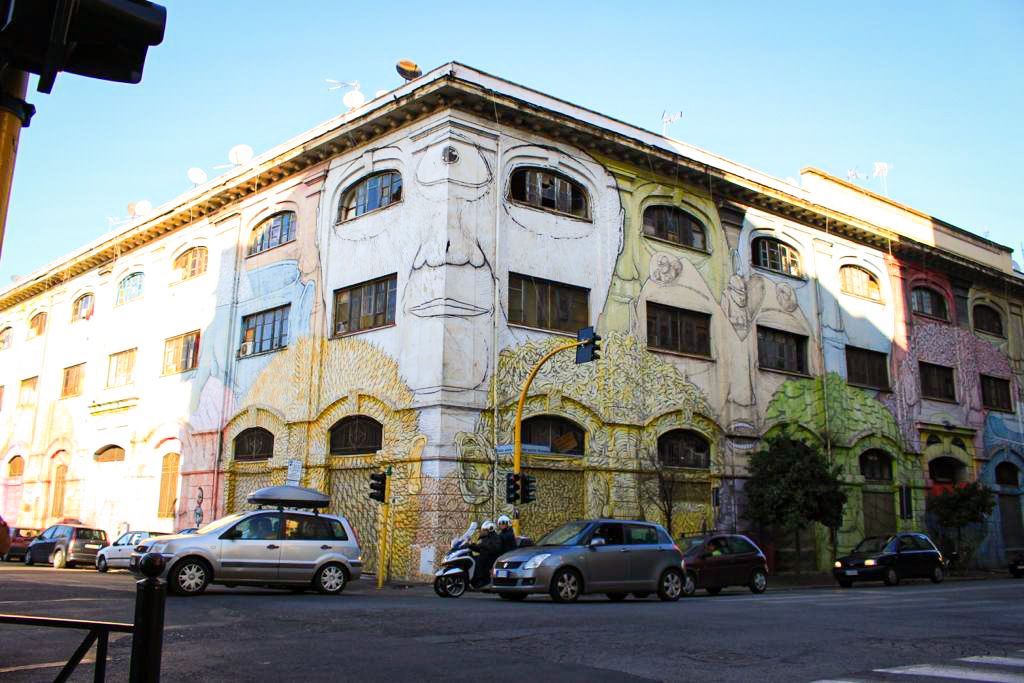In the collective imagination if you think of what to see in Rome you invariably think of the Colosseum, the Spanish Steps, Piazza Navona and all those postcard views that make the capital a truly unique city, and I dare say the most beautiful city in Italy.
But if you want to discover this city in 360 degrees with a Private walking tour, there is another side to consider, a more contemporary, more underground aspect: that of street art in Rome!
Of course, it may not be comparable to the concept, or rather, the way street art is experienced (and preserved) in North America.
If one thinks of the street art in Brooklyn, Toronto, Montreal or Vancouver, there entire neighbourhoods are transformed into veritable open-air art galleries to such an extent that they become a must-see destination and attraction.
But fortunately, little by little things are changing here in Italy too, and street art in Rome is gradually taking hold.
Thus gradually taking on the dimension of an open-air gallery with a slightly decadent charm.
Today, street art in Rome can be found in several places, among the main districts these are the must-see spots:
– Street art in Rome at Pigneto
– Street art in Rome at the Quadraro
– Street art in Rome at Tor Marancia
– Street art in Rome in Trastevere
Among the most underground areas of the capital, a prominent place is certainly occupied by the Ostiense district: in fact, the industrial archaeology that distinguishes it, from the disused general markets to the gazometro, has made the area a favourite of artists of various kinds, from film directors (think of Ozpetek who has shot a large number of films here) to graffiti artists who animate it in the middle of the night.
Focusing on Roman street art, there are many open-air works scattered along the streets from San Paolo to Piramide.
Street Art in Ostiense district
The first stop on this tour of Roma Ostiense is definitely the former air force barracks in Via Porto Fluviale. Here the artist BLU painted a huge mural, later called I mille volti di BLU (The thousand faces of BLU), which covered the entire façade of the building with colourful humanoid faces. The most interesting aspect is the fusion of the work with the architecture: the windows become the eyes of these monstrous faces, in a beautiful play of shapes and colours. This very interesting work is considered by the artist himself to be one of the best experiences of his life.
Starting from Via Ostiense, right in front of the Basilica of St. Paul Outside the Walls, is Sam3’s dreamlike work: it shows a black silhouette dressed in stars looking at a sphere of light, perhaps a moon, within which other men with no identity move restlessly.
Turning left onto Via dei Magazzini Generali, JB Rock’s 60-metre-long Wall of Fame redevelops the area: against a red background, famous characters who have marked and inspired the artist’s life, from Dante Alighieri to Zorro, stand out in alphabetical order.
On the parallel Via del Porto Fluviale, at the end of the street we meet the great Swimmer by Iacurci overlooking the Pescheria Ostiense: it was made for the Outdoor Festival in 2011, and still brightens up this part of the Capital with its playful sporty outfit, complete with red cap and goggles.
At the intersection of Via del Porto Fluviale and Via delle Conce, we will therefore be observed by the many colourful faces created by Blu on the Waterfront.
The artist’s intention is to focus attention on a social scourge, that of the homeless and squatters, which in fact affected the very building from which those devilish faces look at us.
When we reach the subway in Via delle Conce, we come across the cycle of murals created by two Roman writers, Lucamaleonte and Hitnes.
If the former focused on a floral universe, the latter offers us a repertoire of the animal world, culminating in a black cat that is a little funny and a little disturbing.
The cycle is really quite imaginative, so much so that it manages to give colour back to the grey city tunnel on which it was drawn.
Having passed the subway, we are now in the heart of Testaccio. I would therefore conclude this excursus on Capitoline street art at the Città dell’Altra Economia (although a little outside the boundaries of the starting area) with the work of an internationally famous writer: this is Alicè (Alice Pasquini), with her dreamy little girl in the center of the square.


